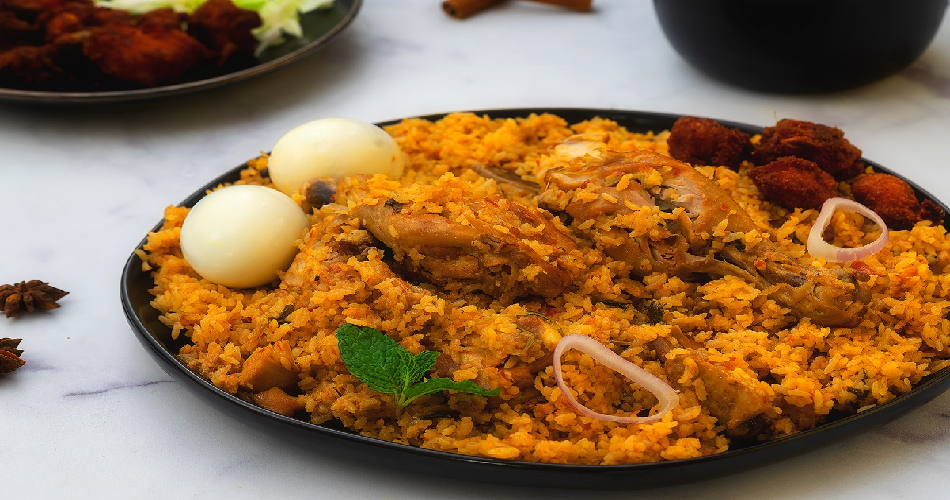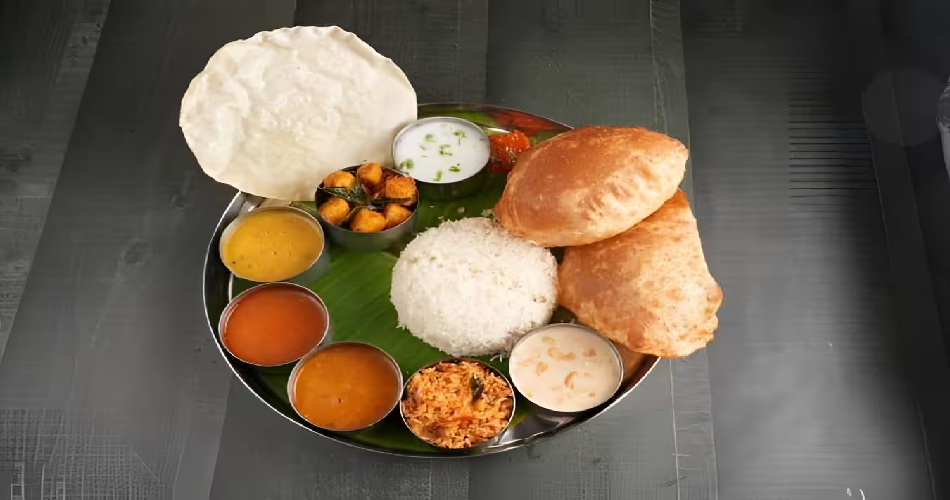
Here’s a detailed guide to the Top 10 Foods to Try in Ambur (Tamil Nadu) — written so that if you’re a new tourist or visitor, you won’t need to look elsewhere for key info.
1. Ambur Biryani
- What it is: A signature biryani of the region made with short-grain “seeraga samba” rice (or similar), meat (mutton or chicken), curd-based marinade and spices.
- Why try it: It’s the culinary highlight of Ambur and a must-eat for visitors.
- How to enjoy it: Ask for the meat variant you prefer (mutton is common). Often served with brinjal (eggplant) curry or pickle on the side.
- Tip: Go to a well-known biryani house early since it can get busy.
2. Mutton/Chicken Curry with Rice (Local Style)
- What it is: A rich meat curry served alongside rice, often tinted with regional spices and flavouring typical of Ambur’s Muslim-influenced cuisine.
- Why try it: Gives a deeper taste of the local lunch/dinner flavour beyond just biryani.
- How to enjoy it: Pair with plain rice or sometimes with small breads/roti. Ask for moderate spice if you’re not used to hot food.
- Tip: Check for “nalli” (bone-mutton) versions or boneless based on your preference.
3. Beef/Goat Kabab / Grilled Meat Snacks
- What it is: Charcoal-grilled chunks of beef or goat, often skewered or served as starters/snacks.
- Why try it: Street-food style snack that gives a flavour of the night-time food scene in Ambur.
- How to enjoy it: Have it as a snack before or after your main meal, perhaps with a local beverage.
- Tip: Pick a stall that appears clean and busy—fresh grilled meat always tastes better.
4. Parotta with Salna or Kurma
- What it is: Layered flatbread (parotta) served with a rich meat or vegetable gravy (salna/kurma) typical in Tamil Muslim food culture.
- Why try it: It’s a local favourite for brunch or late dinner and reflects regional fusion cuisine.
- How to enjoy it: Order “one parotta with kurma” and share if you prefer lighter eating.
- Tip: Eat it fresh—parotta cools and becomes chewy later.
5. Street-Food Chaat & Snack Items
- What it is: Fried snacks, chutneys, tangy mixtures (chaat), vada pav type items in the market stalls.
- Why try it: Offers a different texture—lighter, snack-style food rather than heavy meals.
- How to enjoy it: Explore the bazaar area after 5 p.m. for more snack stalls; pick one that’s popular with locals.
- Tip: Consider your spice tolerance—ask for “less chilli” if needed.
6. Sweets & Local Desserts
- What it is: Traditional Indian sweets sold in shops (milk-based sweets, halwa, etc).
- Why try it: A sweet treat after your meal and a good souvenir to carry back.
- How to enjoy it: Ask for “packed to take away” if you plan to travel onward.
- Tip: Check packaging—ensure freshness and suitable for travel.
7. Local Vegetable & Brinjal Curry Side Dishes
- What it is: Side dishes like brinjal (eggplant) curry, pickles that accompany biryani and rice meals.
- Why try it: These sides complement the main dishes and give fuller flavour experience.
- How to enjoy it: Order alongside your meal; try it with rice or biryani to balance.
- Tip: Some sides are spicier—ask for mild if preferred.
8. Breakfast South Indian Fare
- What it is: For a morning meal: idli, dosa, upma, etc, in local eateries.
- Why try it: Gives a lighter, local-style start before heavier meals later in the day.
- How to enjoy it: Head out by ~8–9 a.m. to a popular breakfast joint; try dosa or idli with chutney/sambar.
- Tip: Check if the eatery is clean and has local clientele.
9. Tea / Filter Coffee + Evening Snacks
- What it is: Local tea (chai), filter coffee served in small cafés with snack items like pakoras, vadas, etc.
- Why try it: Offers a relaxed break in the day and a chance to watch local life and food culture.
- How to enjoy it: Visit cafés around late afternoon (~4-5 p.m.). Pair your drink with a snack.
- Tip: If you’re sensitive to caffeine, ask for “less” or decaf if available, though decaf may not be standard.

10. Vegetarian Thali / Mixed Meal
- What it is: A full vegetarian meal platter (thali) with rice, dal, vegetable curries, chapati etc.
- Why try it: Good for vegetarian visitors or for sampling regional vegetarian cuisine alongside non-veg options.
- How to enjoy it: Select a thali place; check what curries are included.
- Tip: Some thalis are fixed price—check bill before.
Additional Practical Tips for Food Touring in Ambur
- Hygiene: Choose eateries that look clean; bright lighting and moderate crowd are good signs.
- Spice level: South Indian food can be hot—if you prefer mild, say so.
- Timing: Peak meal times (1–3 p.m. lunch, 7–9 p.m. dinner) will be busy—consider arriving earlier.
- Transport & location: Many good food places are near the main roads or bazaar area; if arriving by train or bus, ask locals for “famous biryani restaurants”.
- Diet restrictions: If vegetarian or avoid certain meats, verify before ordering (some dishes default to mutton or beef).
- Try local specialties: Ambur is best known for its biryani but don’t skip the sides, snacks, tea breaks.
- Budgeting: Local dishes are generally affordable; check if bill includes service or taxes.
- Take-away: If you are travelling onward, ask for packing; biryani can be carried but check temperature and packaging.